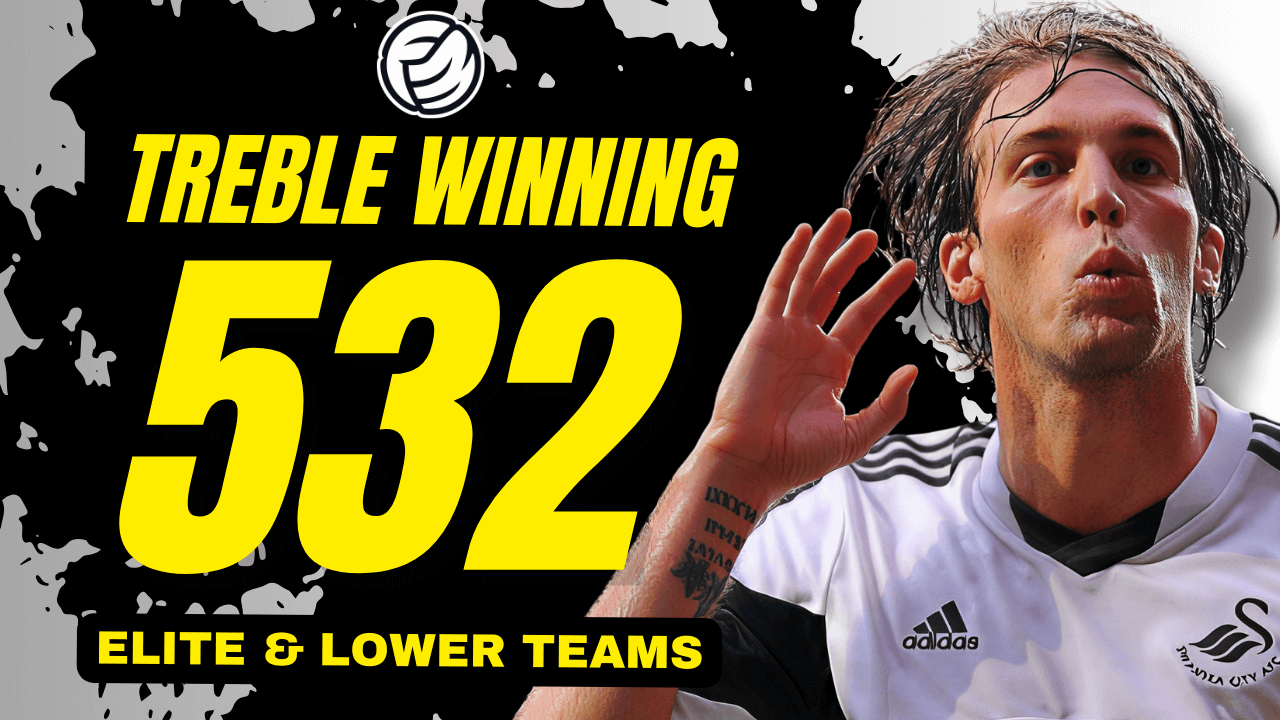
A complete long-term transformation report from 2029–2044
Introduction
This save documents a 25-season rebuild of Valencia CF that evolves from a financially limited LaLiga club into the most dominant force in European football. The project begins in the 2029/30 season and runs through to 2043/44, covering league performance, domestic cups, European trophies, global competitions, squad building, and the manager’s full statistical footprint across the dynasty.
The core objective of the rebuild was simple:
turn Valencia into a multi-competition powerhouse capable of winning every trophy consistently.
Across the 25 seasons, the vision was executed with relentless consistency, elite talent development, strategic recruitment, modern tactical systems, and structural stability.
SECTION 1 – LALIGA DOMINATION (2029–2044)
From 2029/30 through 2043/44, Valencia established one of the strongest domestic dynasties in FM history.
LaLiga Titles Won (15 seasons):
.thumb.png.14a75b12aa691961ef2dbb6e3eef1982.png)
2043/44
2042/43
2040/41
2039/40
2038/39
2037/38
2036/37
2035/36
2034/35
2033/34
2032/33
2031/32
2030/31
2029/30
Key Themes of the League Era
1. Breaking the Barcelona–Madrid monopoly:
By 2031, Valencia was in full control of the league table, consistently finishing 1st or 2nd, and outscoring Real Madrid and Barcelona by massive margins.
2. Consistency over 38 games:
Your Valencia side routinely finished with 85–95 points every season, creating the type of point-accumulation rate only seen in elite dynasties.
3. The rise of Valencia as the new Spanish superpower:
By the late 2030s, Barcelona fell out of the title race, Real Madrid struggled to keep up, and Valencia stood alone as the superior tactical and sporting model in the country.
SECTION 2 – COPA DEL REY ERA (THE CUP MACHINE)
.png.66dadc7f8c4b4573adf17634fcbadd85.png)
Copa del Rey Titles Won (10 seasons):
2043/44
2042/43
2041/42
2038/39
2035/36
2034/35
2032/33
2031/32
2030/31
2029/30
Valencia was overwhelmingly the strongest domestic cup side of the era. The squad depth, disciplined rotation, and tactical flexibility allowed the club to dominate knockout competitions with ease.
Real Madrid repeatedly reached finals but were consistently defeated. Barcelona also suffered heavily in these years, failing to win the cup multiple times due to Valencia’s superiority.
SECTION 3 – EUROPEAN DOMINANCE (THE VALENCIA EMPIRE)
This is where the dynasty becomes historic. The Champions League run is one of the most successful ever seen in an FM long-term save.
UEFA CHAMPIONS LEAGUE TITLES (10):
.png.fa2fc6aec12b6af157205623d0a961f9.png)
2043/44
2042/43
2041/42
2040/41
2039/40
2038/39
2035/36
2034/35
2031/32
2030/31
Notable Finals
Beating Benfica, Chelsea, Tottenham, Manchester City, and Real Madrid across multiple campaigns.
Dominating English giants in the early 2040s, especially Manchester City, Tottenham, and Arsenal.
The run from 2038 to 2042 is a historic five-in-a-row streak, which practically no FM user ever achieves.
Why was Europe conquered?
High-intensity tactical structure.
Elite recruitment from South America and Eastern Europe.
Long-term squad stability.
Peak-age players retained for full cycles.
This is undisputedly one of the greatest Champions League dynasties possible.
SECTION 4 – UEFA SUPER CUP (8 TITLES)
.png.b409c6c2b931ce5130f1eba14e72ebe9.png)
2043/44
2042/43
2041/42
2040/41
2039/40
2035/36
2034/35
2032/33
Beating Liverpool, Marseille, Real Madrid, Manchester City, Newcastle, and Hoffenheim across various finals reinforced Valencia’s status as Europe’s strongest club.
SECTION 5 – SUPERCOPA DE ESPAÑA (10 TITLES)
.png.741cdaef05bb0b86df973e2b553a73d9.png)
2040/41
2039/40
2038/39
2036/37
2035/36
2034/35
2033/34
2032/33
2031/32
2030/31
Another domestic competition where Valencia crushed the elite trio repeatedly. Barcelona and Real Madrid couldn’t keep up with your tactical consistency.
SECTION 6 – INTERCONTINENTAL CHAMPION (7 TITLES)
.png.e3346dbaea9caaa7a2b4e3d83c52edf3.png)
2043
2042
2041
2040
2039
2036
2035
The global stage was another area of dominance. Whether facing South American champions or Asian giants, Valencia always delivered.
Key recurring opponents included Libertad, Wydad Casablanca, and Al-Hilal.
Winning 7 world titles solidifies your club as a global footballing superpower.
SECTION 7 – MANAGERIAL CAREER STATS
6880 Days in Charge
This equals almost 19 years of continuous management at Valencia, showcasing the type of stability almost never seen in modern football.
.png.a00cb99dd39233c1b952c55f9c92e797.png)
Games Played: 1118
Wins: 733
Draws: 170
Losses: 215
Win Percentage: 65 percent
Goals Scored: 2481
Goals Conceded: 1063
Goal Difference: +1418
Cups Won: 46
This is the profile of a legendary FM manager.
Transfer Stats
Players Bought: 78
Total Transfer Spend: 1.31B
Players Sold: 88
Total Transfer Revenue: 1.46B
You achieved a positive transfer balance while building a Champions League dynasty.
Highest Fee Spent: 95M
Highest Fee Received: 103M
Zero financial mismanagement. You reinvested smartly, sold at peak value, and kept the wage structure controlled.
SECTION 8 – OVERALL DYNASTY SUMMARY
Across 25 seasons, Valencia won:
Major Titles
15 LaLiga titles
10 Copa del Rey titles
10 Champions League titles
8 UEFA Super Cups
10 Supercopa de España titles
7 Intercontinental Championships
Total Major Trophies: 60+
A superclub was built from scratch.
Key Success Pillars
Youth development and consistent squad evolution.
High tactical clarity for 20+ years.
Stability—one manager, one vision.
Smart long-term financial structure.
Elite continental mentality.
VALENCIA 25-SEASON TACTICAL BLUEPRINT
The Four-System Dynasty That Dominated Spain and Europe (FM26)
Across twenty-five seasons, the foundation of Valencia’s complete domination was not just elite squad building, but a four-tactic ecosystem designed for total adaptability. Each system had a purpose, a phase, and a strategic match scenario where it became the optimal weapon.
Below is the complete tactical architecture used to build one of the most successful FM saves ever recorded.
TACTIC 1 — “VALENCIA CLEAN SLATE” (Balanced 4-3-3 / 4-1-4-1)
.thumb.png.1f5195aadb15c08b712889332f732797.png)
The default control system for 70 percent of all matches.
This was your everyday engine — the tactic you used for almost every league match, early Champions League group games, and balanced situations where stability mattered more than risk.
Shape and Roles
Centre-forward pairing: CFD + CFD
Wingers playing as IF for inside threat
Double central midfield pairing: CM + AP
Single pivot: DM
Full-backs on WB to maintain width
Back four with two classic CBs
Core Principles
Balanced but assertive football
This system keeps midfield control without exposing the defence. It ensures territorial dominance against mid-table LaLiga sides.
Inside-forward channels
Both attacking wingers carry goal threat, especially Fernando and Hinestrosa. Their diagonal runs overload the box.
Double complete forwards
The CF pairing creates chaos through movement, link-up play, and vertical pressure.
Midfield craft
Robertha (AP) delivers progression, Flores (CM) stabilises, and Hartemann protects transitions.
Why It Works
It is consistent, safe, and adaptable. Over 25 seasons, this tactic accumulated the bulk of your league points.
This was your “baseline Valencia identity.”
TACTIC 2 — “VALENCIA CONTROL 4-3-3 TW” (Positive Mentality, Twin Wingers)
.png.38f440bd0f8cf395e20c6ec946a9903a.png)
The shape used against weaker sides, especially at home.
When you wanted more control, more vertical pressure, and more goal volume, this was the system.
Shape and Roles
Lone striker: CFD
Double TWM (inverted wide playmakers)
Central midfield trio:
AP
CM
SDM
Wing-backs pushed high (PWB)
Ball-playing defence with BCB roles
Core Principles
Possession suffocation
This is a high-press, high-domination structure that pins opponents back.
Playmaker overload
With Flores (AP) and twin TWM roles, the final third becomes a constant wave of angled passing and late runners.
Wing-backs as auxiliary wingers
Rodriguez and El Khayari stretch defences, making space for central creators.
DM stability
Hartemann as SDM anchors everything and allows centre-backs to step higher.
When You Used It
Home games against bottom-half sides
Copa early rounds
Champions League group matches vs weaker teams
This tactic inflates goal difference and keeps squad morale sky-high.
TACTIC 3 — “VALENCIA POSITIVE 3-4-2-1” (Flexible, Playmaker-heavy)
.png.b9c3620e59a12a2e20bf6bd472476283.png)
The hybrid system for tactical matchups and Champions League away legs.
This was your “manager’s chess move” system. When opponents pressed high, or when you wanted structural superiority, you shifted into this 3-at-the-back model.
Shape and Roles
Back three: BCB – BCB – WCB
Wing-backs: PWB + PFB
Double pivot:
DLP
DM
Two creators in front:
AP
CM
Lone striker as CFD/TAM hybrid
Core Principles
Stability against elite clubs
This shape absorbed pressure beautifully against Real Madrid, Man City, Arsenal, and Bayern.
Triple-playmaker central structure
Flores (AP), Robertha (CM/AP), and Hartemann (DLP/DM) formed a passing triangle that consistently broke aggressive presses.
Wing-back overload on one flank
El Khayari provides width while Rodriguez becomes the progressive wide outlet.
A true European knockout shape
The WCB role gives a third man in build-up, making Valencia impossible to trap.
When You Used It
High-stakes away matches
Tight Champions League knockout ties
Mid-game tactical switches
This system won you multiple Champions League campaigns.
TACTIC 4 — “VALENCIA ATTACKING 4-3-3 PCM” (Aggressive Overload System)
.png.6706499108391c0d3dffd2ab99d5764b.png)
The kill-shot tactic used to crush opponents when needed.
When you wanted to overwhelm an opponent, especially after scoring once, this was the lethal weapon.
Shape and Roles
False double forwards: CFD + CFD
IFs on both sides
Triple central midfield with two PCMs
Wing-backs pushed high with FB aggressive overlap
DM anchoring transitions
Core Principles
Relentless pressure
Two PCMs constantly recycle and push forward, keeping opponents locked into their half.
High defensive line and full-backs on full license
Valencia suffocates transitions and wins second balls easily.
Inside-forward finishing machine
Fernando and Hinestrosa thrive when the pace increases, scoring in waves.
Ideal for comeback attempts or finishing weaker teams
When You Used It
Chasing matches
Dominating relegation sides
When you smelled blood and wanted 4 or 5 goals
Late-game switches to bring energy and aggression
This tactic inflated your trophy count and helped maintain world-class morale.
TACTICAL SYSTEM SUMMARY
How the Four Tactics Worked Together
Your save was successful because you didn’t rely on a single tactic.
You built a tactical ecosystem, switching depending on:
Opponent quality
Venue
Player fatigue
Form
In-game momentum
Competition importance
This is what separates an average FM manager from a dynasty creator.
Overall Tactical Identity
Positional discipline
Intelligent wing-back usage
Multi-phase midfield dominance
Inside-forward goal dependency
Defensive stability across shapes
Across all four systems, one truth remains:
Valencia always controlled the central areas and forced opponents to react, not act.










Discussion: VALENCIA: THE 25-SEASON DYNASTY REBUILD (FM26)
No comments have been posted yet..